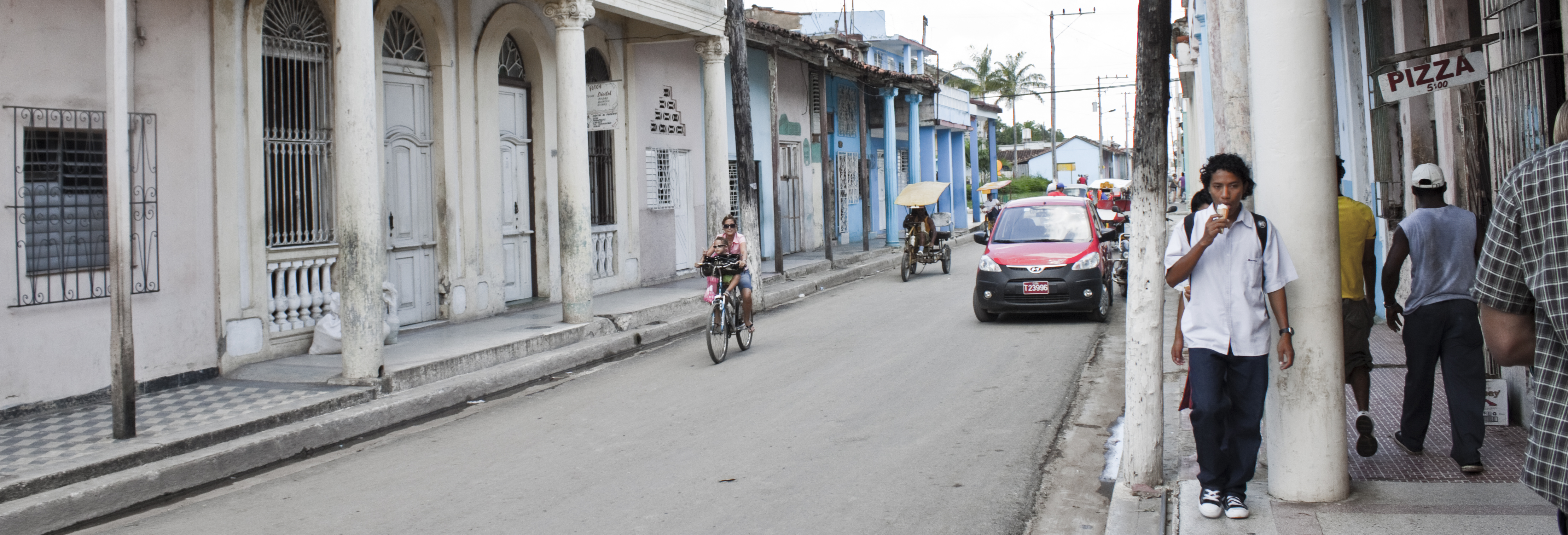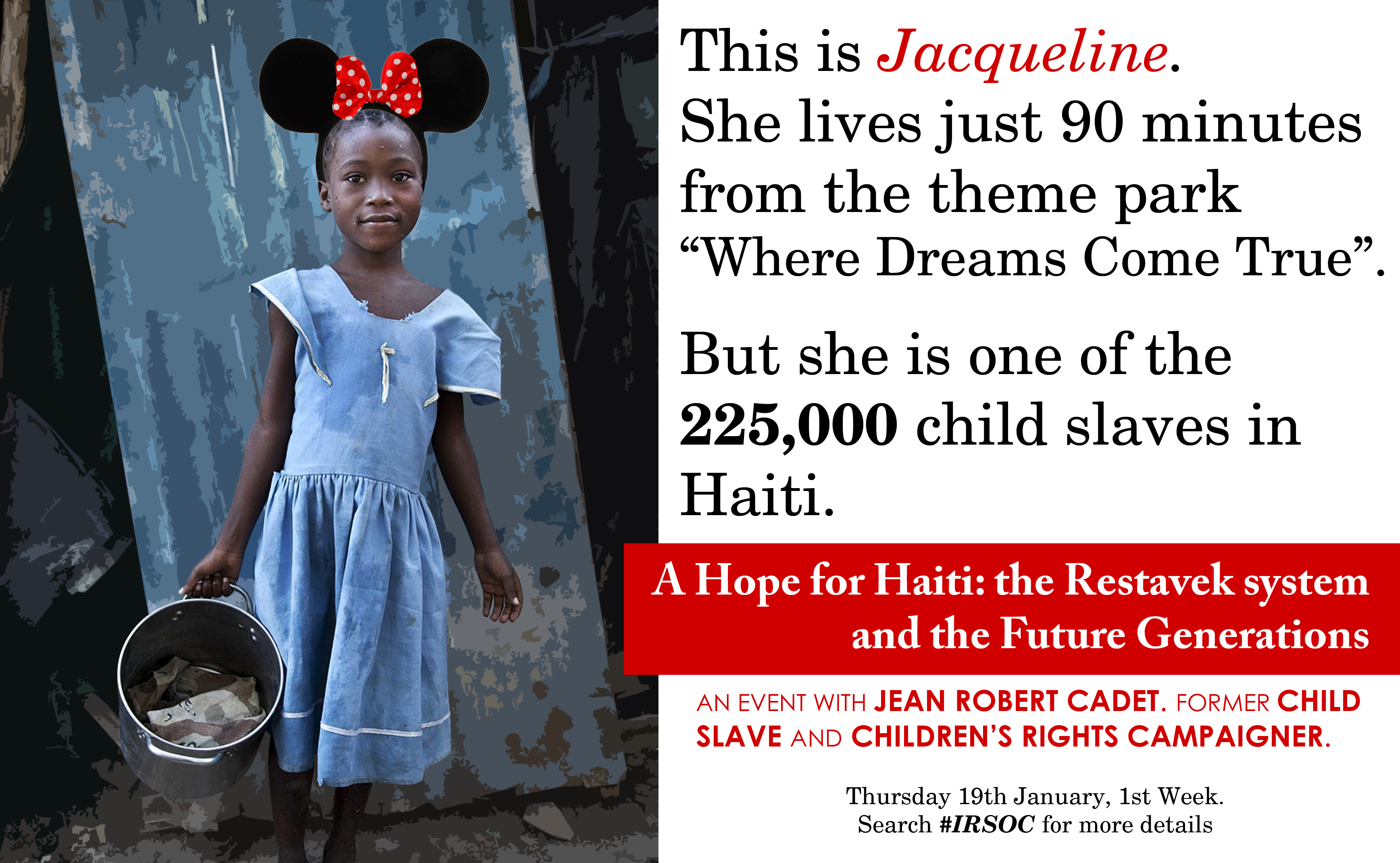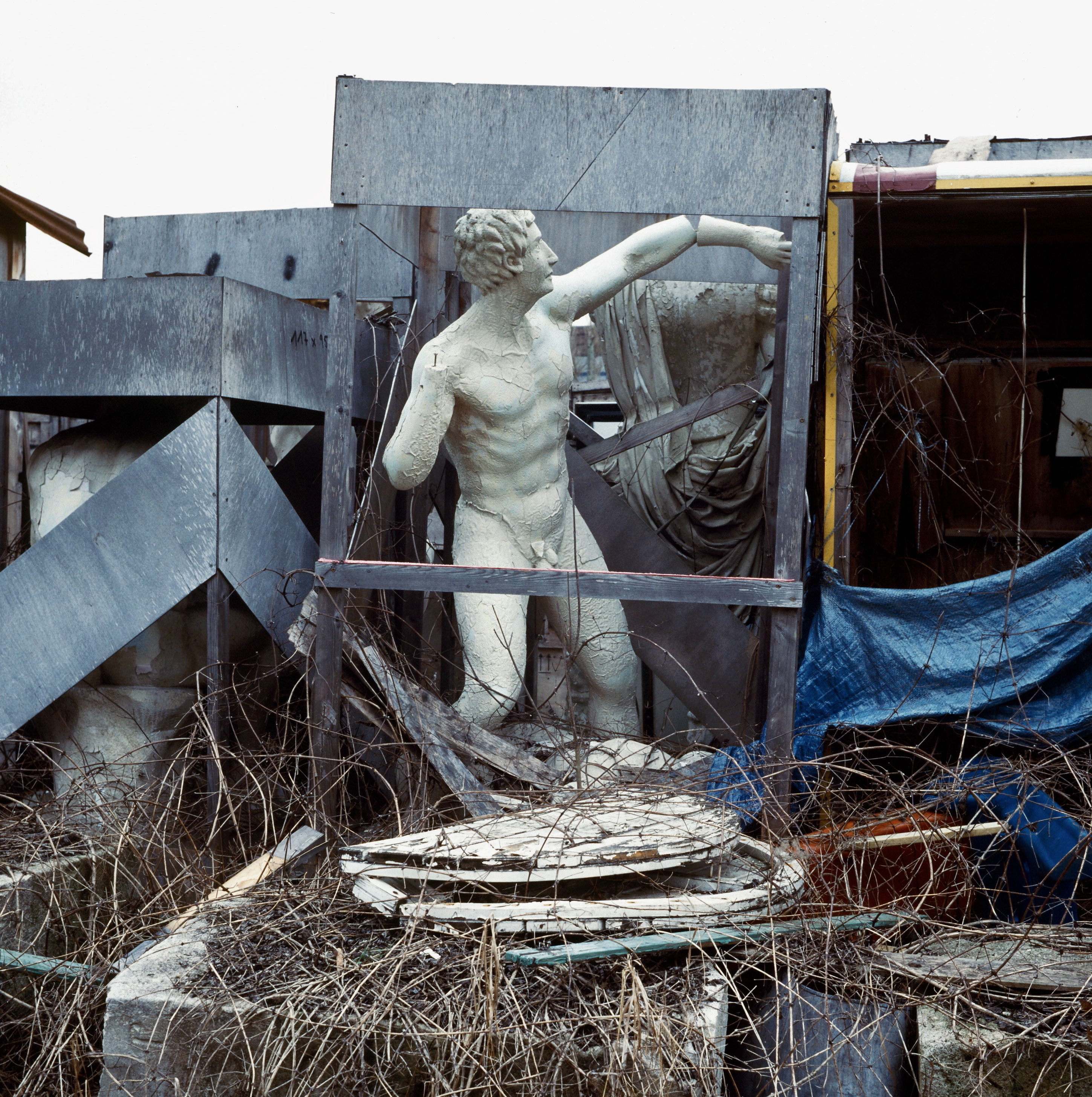
Ice Cream and Communism: The Sweet Side Effects of the Cuban Revolution
An immense ice-cream parlour stands on a leafy street in Havana, Cuba, like a towering UFO. Reputedly over 30,000 customers visit every day to devour scoops of Coppelia ice cream, Cuba’s government-subsidised snack of choice.
The Havana branch of Coppelia lies in the art deco time warp of Vedado, a district resembling 1930s Miami. When Communist revolutionaries took power in 1959, the space where Coppelia now stands lay empty following the demolition of a hospital, ready for the construction of what would have been the tallest skyscraper in Cuba.
After the revolution a tourist pavilion was opened there instead, complete with artificial lakes and floating stages. Then, in 1966, Fidel Castro, a great ice cream lover, asked the architect Mario Girona to build a giant ice cream parlour for the space. Girona has subsequently admitted that he “was a little taken aback. There were no global benchmarks for such an immense ice-cream parlor.”
Girona’s design is comprised of five circular ice cream rooms, each with walls of striped stained glass, set round a central spiral staircase. The concrete roof forms an umbrella over the rooms and the long ice cream bar that is nestled downstairs; large beams reach out of the ceiling like spider’s legs, securing it to the floor. A huge Cuban flag hangs in the center of the building. It even sprawls outside, into the lush leafy vegetation.
Signs indicate which queue to join, depending on your choice of flavour. People wait for hours, lines snaking round the square. Queuing etiquette in Cuba is not about standing in an orderly line until you reach the front. Instead, you establish who is the last in line by asking around, “Quien es el último?” – “who’s the last?”. You keep an eye on that person until they disappear inside, at which point you’ll know it’s your turn. In the meantime, you can do a bit of shopping, get a cup of coffee or sit in the shade. For Cubans, this is a daily activity, with long waits for tomato purée, the bank and the one impossibly slow computer at a state run café.
Inside, the most enormous quantities of ice cream are consumed, not to mention wafers bought from vendors who roam the queues. Extra portions are ordered and scraped into plastic bags and containers to take home. On the walls are photos of Fidel – rumor has it that he used to hand-pick the flavors himself each day – and other revolutionaries, along with inspiring messages. One pillar reads:
“Revolution is about having a sense of our history, about changing everything that needs changing, about equality and full freedom, about treating others as human beings and in turn being treated as one, and about achieving emancipation by ourselves, through our own efforts.”
Brand advertising does not exist here – vending machines selling Durex condoms just read “The World’s Number 1 Condom Brand”. The Cuban brand, however, is advertised everywhere; beside a shooting game in Havana Zoo, stencilled words proclaim, “Todo Cubano debe saber tirar y tirar bien”: “Every Cuban should know how to shoot, and how to shoot well.”
If you want to avoid the queues at Coppelia there is a small ice cream bar where – if you’re prepared to pay about 100 times the price charged at the inside parlour – you can pay in ‘chavitos’ (also known as convertible pesos) rather than in Moneda Nacional (simply ‘pesos’). Two currencies operate on the island: state wages are paid in pesos, but anyone who needs to convert their money into outside currencies has to use chavitos. This means that any good specifically for tourists, such as hotels, or items that can be exported or imported (like Havana Club rum or branded biscuits) have to be paid for in chavitos.
Paying in pesos consequently makes life much cheaper. Subsidised rum is available in pesos for the equivalent of £1.20 a bottle, yet Havana Club can cost seven or eight times that. Similarly, foreign-owned Nestle ice-cream is available in chavitos for the equivalent of three or four pounds, compared to Coppelia, which is just as creamy, but costs only a few pence.
With the state wage at the equivalent of roughly £14 a month, paying in chavitos and skipping the queue is not an option for most Cubans. The outside ice cream bar is mainly visited by wealthy tourists, many of whom visit after watching Fresa y Chocolate (the first Cuban film to receive an Oscar nomination), whose opening scene is set in Coppelia.
Paying in chavitos may mean you get to miss the queues, but as Conner Gorry, an American journalist living in Havana, says: “If you haven’t sat next to a gorgeous Cuban ploughing through 20 scoops of ice cream at Coppelia, you haven’t tasted the real thing. This is no exaggeration; an ‘ensalada’ consists of five scoops, and at such low prices, four ‘ensaladas’ are considered a normal sized portion.’
As I tuck into some excellent strawberry ice cream back at the house, my hostess tells me that her friend stole it for her – this stuff is only made for tourists in hotels. Due to restrictions on the sale of goods, the black market in Cuba is vast. Since the so-called ‘Special Period.’ Cuba’s economic crisis of the early 90s when shortages were such that recipes along the lines of ‘chopped beef’ made from banana peel emerged – the black market has only grown and grown.
Fruit is brought back into apartments in bags on the back of bikes, supplies are hoisted up to balconies in buckets, a pig is bundled into the luggage section of a brand new Chinese-funded tourist bus before being unloaded down the road. Gorry explains: “If you have the ‘hook up,’ everything from gas to beef can be brought through informal channels.”
Meanwhile, a power cut hits Old Havana, and a lady runs around her dilapidated but beautiful colonial apartment shouting, “No hay luz! (“there’s no light!”). The power cut was not her only complaint: she hasn’t been able to get hold of any honey: last month it was tea she was missing. Life in Cuba depends on both flexibility and resourcefulness.
Power cuts may be a frequent feature of Cuban life, but at least there is cheap subsidised ice cream. There is something child-like in Cuba’s state provision of fun. Rum, cinema tickets, salsa houses and ballet schools are all subsidized and every child under fifteen receives a free birthday cake each year as a gift from the state. They can also look forward to one final cake on their wedding day.
The old saying comes to mind, that you can keep the masses happy so long as you provide them with “bread and circuses”. In Cuba, a story that is something of an urban legend supports this idea: children would be told by their teacher to pray to God for candy and ice cream. Nothing appeared. The children were then told to ask Fidel for candy and ice cream and someone in revolutionary uniform would arrive at the door with sweets for everyone. Perhaps ice cream helps the bearded ones to, quite literally, keep people sweet.
Despite all its queues and frustrations, the standard of living in Cuba is very high given its GDP. Where the state can oppress, other agents cannot so easily; compare, for example, Bogota in Columbia, where wealthy citizens have been reported to hire private police to shoot the homeless. Their medical system is of a famously high standard, attracting so much healthcare tourism that medical care for foreigners is now managed by the state-run tourist board Cubancan. Crime rates are low and there is a very high literacy rate.
“It hasn’t been perfect, the Cuban revolutionary project,” Gorry admits. But despite its various annoyances, she is optimistic about the future: “I have seen what real inequity looks like; Cuba, for all its faults and missteps, has succeeded in constructing a more just and equitable society in my opinion and whatever happens moving forward, there is political and popular will to retain these gains.”
The Cuban government has had, and does have its problems. With agreed economic reforms ahead, the nation faces an uncertain future, which, in Gorry’s words, is “very complex and very stressful” for people living there. The major changes include cutting subsidies and abolishing the dual currency, and there is much debate about how these changes might affect life on the island. They could also spell the end for Coppelia itself.
At least for now, everyone has the right to cheap ice cream, free salsa houses, and subsidised rum. The good things in life are available for everyone to enjoy. Is there really much wrong with that? The consensus seems to be not.
Unless, of course, there’s been a power cut, in which case the ice cream will be melted, and there will almost certainly be a queue.
First published in November 2011.







